Welcome to Porto! You’re likely here for a Porto travel guide and want clarity on top things to do in this romantic riverside city. Maybe you’ve heard about its cobblestone streets, blue-tiled churches, and/or Port wine. You crave a mix of culture, good food, and scenic wanderings along the Douro River. We’ll break it down so you can plan easily—covering must-visit spots, local eats, and ways to enjoy the city’s charm.
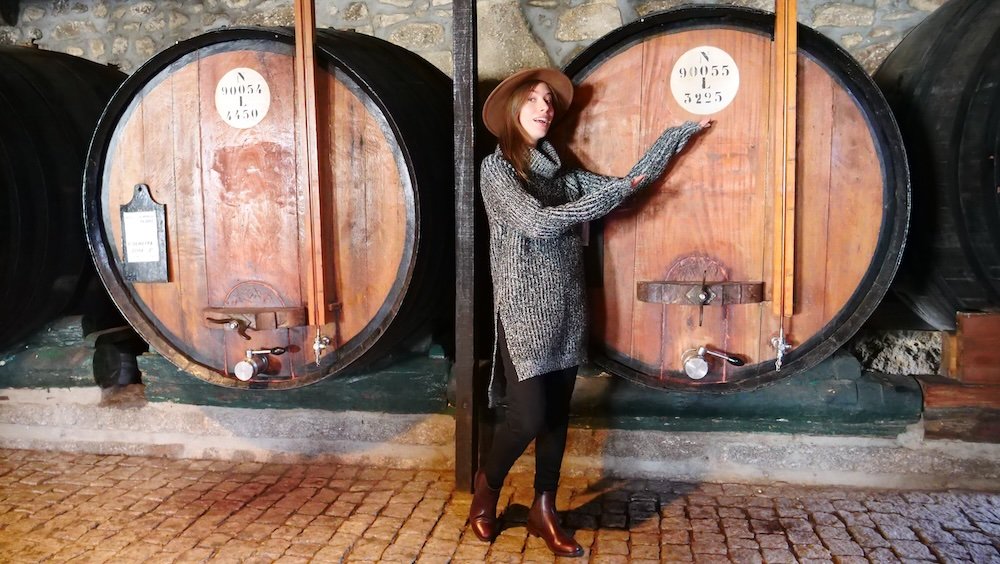
Why Porto?
But planning a Porto trip can be confusing. Which church has the prettiest tiles? How do you avoid tourist traps for a genuine Portuguese meal? Is it best to walk, use trams, or hop on a boat tour? And how about day trips to the Douro Valley or neighboring coastal towns? Questions pile up. But we’ll try our best to address them.
Our Travel Video From Porto, Portugal on Samuel and Audrey YouTube Channel: Nomadic Samuel + That Backpacker as hosts
This guide suits all. Maybe you’re a budget backpacker seeking cheap eats and a dorm bed, or a couple craving cozy heritage stays. Families wanting cultural fun for kids? We’ve got you covered. Porto can be a speedy two-day stop or a leisurely week-long dive. Whether you’re into architecture, scenic train rides, or wine tastings, there’s an angle for every traveler. Thus, let’s explore what Porto has to offer!

Cultural Experiences in Porto
Begin your tour of Porto at the Palácio da Bolsa, which once served as this city’s commercial trading hub. Built in the 19th century and lavishly decorated to appeal to wealthy merchants and international dignitaries, the one place you’ll want to see within this UNESCO recognized building is the Arab Room. Designed in the Moorish Revival style, its exotic nature is thought to be one of the more spectacular examples of this type of architecture in the country.
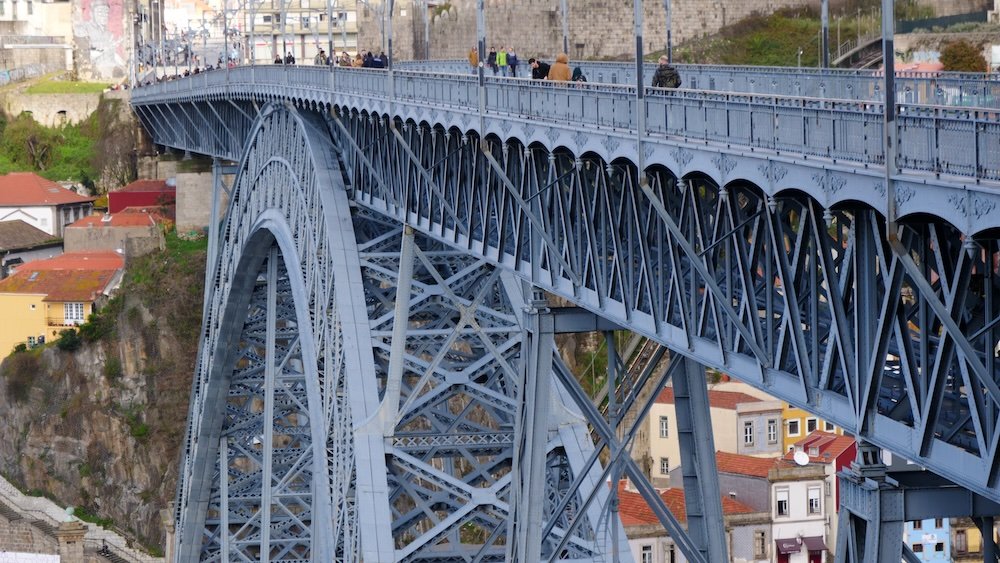
Continuing on to another of Porto’s most beautiful structures, the Clérigos Church is a Baroque style house of worship that stands out on the city’s horizon, as its bell tower soars 76 metres above pavement, which made it the tallest structure in Portugal at the time it was completed.
While the church is beautiful enough on its own to warrant a visit, many come to climb the 240 arduous steps up the tower to get one of the best vantage points of Porto from above.
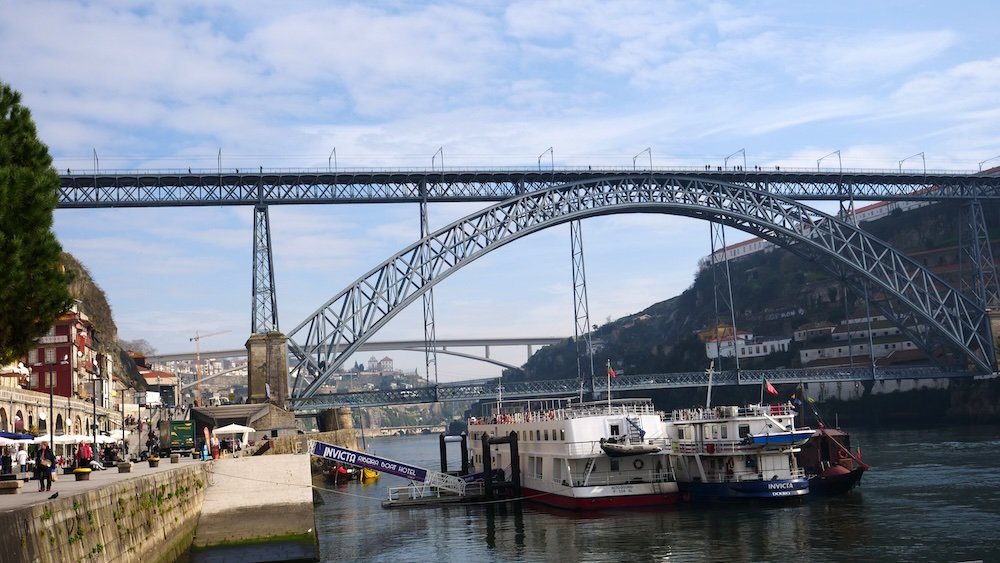
More Experiences in Porto
When you are done checking out the views from the top and the intricately carved pillars and arches, take a few moments to breeze through a photography museum featuring some of the oldest photos taken of Porto, which date back to the late 19th century.
Wondering where J.K. Rowling summoned the inspiration to begin writing the Harry Potter series of books? It all started at a bookstore in Porto called Livraria Lello & Irmao, a large building filled with floor to ceiling with texts old and new.
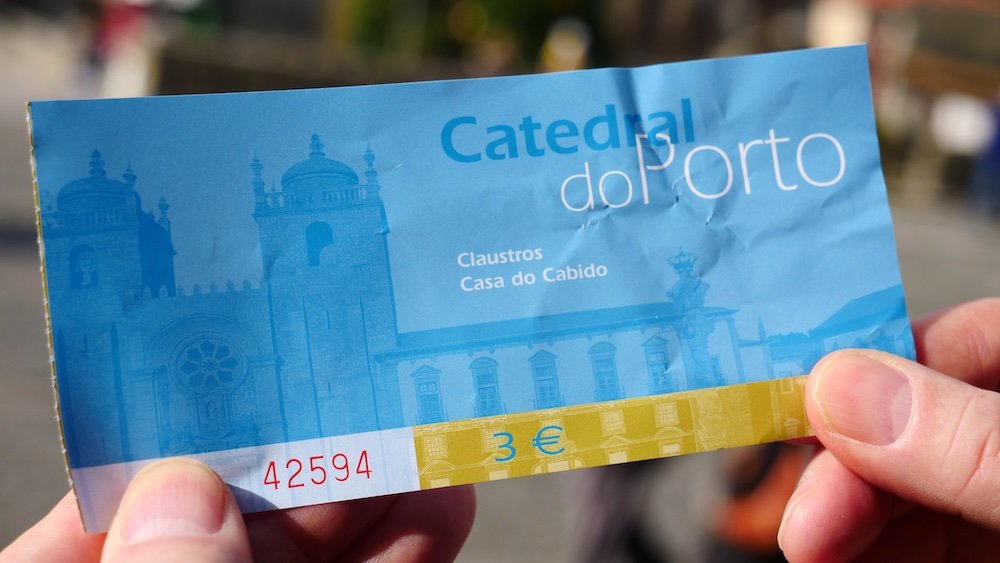
Graced with a giant stained glass skylight, and style elements from the Art Nouveau and Gothic Revival schools of architecture, we can think of no better place in Europe to curl up with a new fiction or non-fiction book and escape into your own imagination, if only for a few hours.
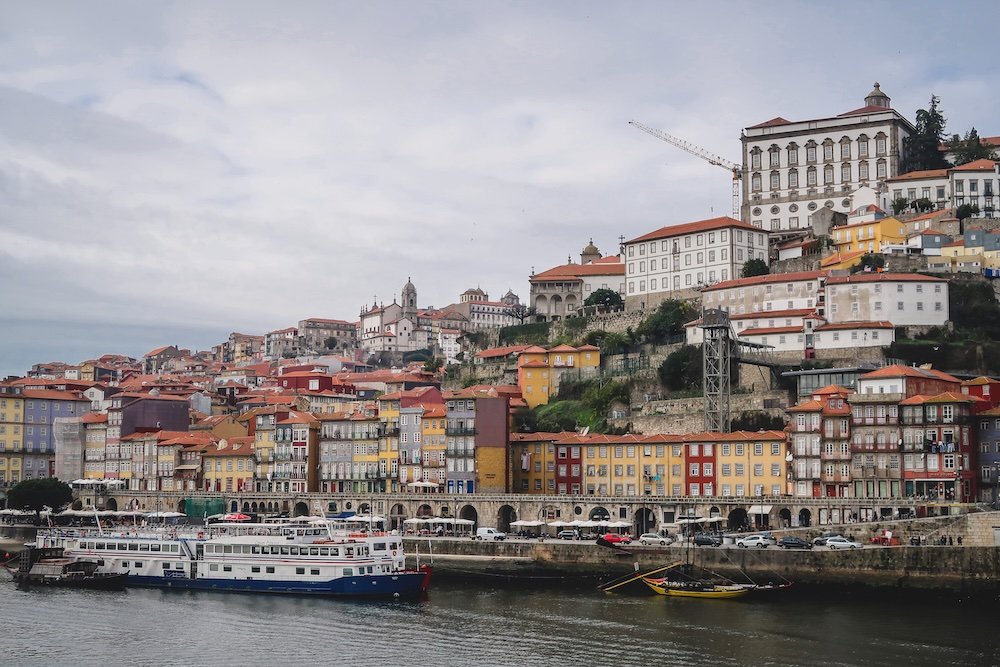
Other Attractions in Porto
Are you traveling to the Porto area during the months of March through November? If so, make arrangements to cruise on, drive, or take the train alongside the River Douro.
The valley created by one of Portugal’s largest rivers is home to countless port wineries, granting the opportunity for an evening filled with fine alcohol, excellent food and epic views.
Even if you aren’t into the wine aspect of this popular day trip, the geography of the steep cliffs that pop up alongside the river in places makes this splurge well worth the expense.
Not leaving the city, but still looking for great views of Porto and the River Douro? Head out for a walk along the Dom Luis I Bridge, which was the longest iron built span in the world when it was completed in 1886.
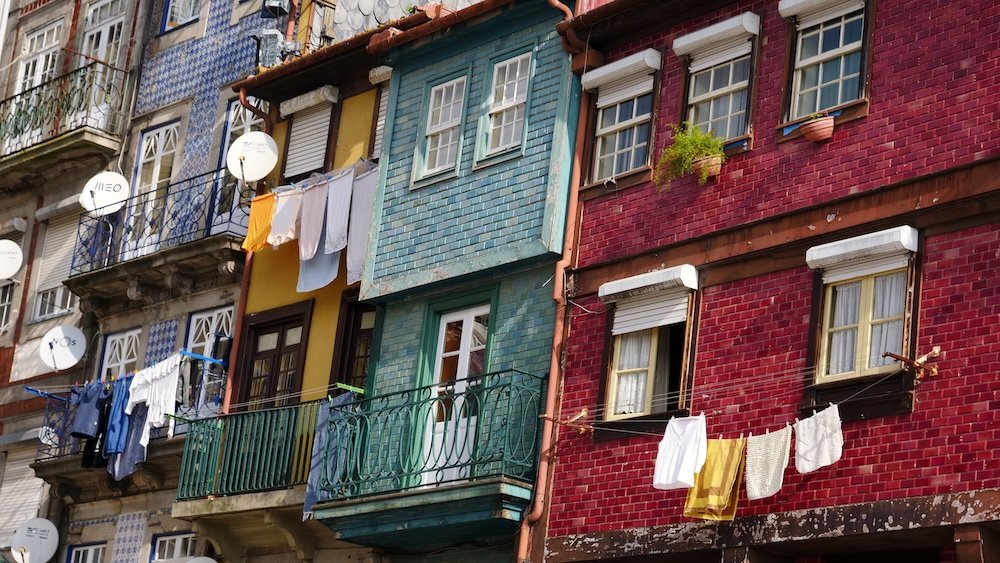
More Attractions in Porto
From the pedestrian decks along this lengthy bridge, great pictures of the city and river can be had, so take your time to find vantage points that will give you unique shots of Porto’s cityscape – there are plenty of excellent ones to be had!
When you finish crossing over to the north side of the River Douro, you’ll find yourself in Zona Ribeirinha, a charming part of town that contains many port houses where you can sample the fine bounty from the vineyards upstream if you don’t have time to go upriver to taste them from the source.
Together with tons of cafes, restaurants and bars, most with excellent views of the waterfront, it is the perfect place to end your time in Porto before moving on to other destinations in Portugal, Spain, or Europe.
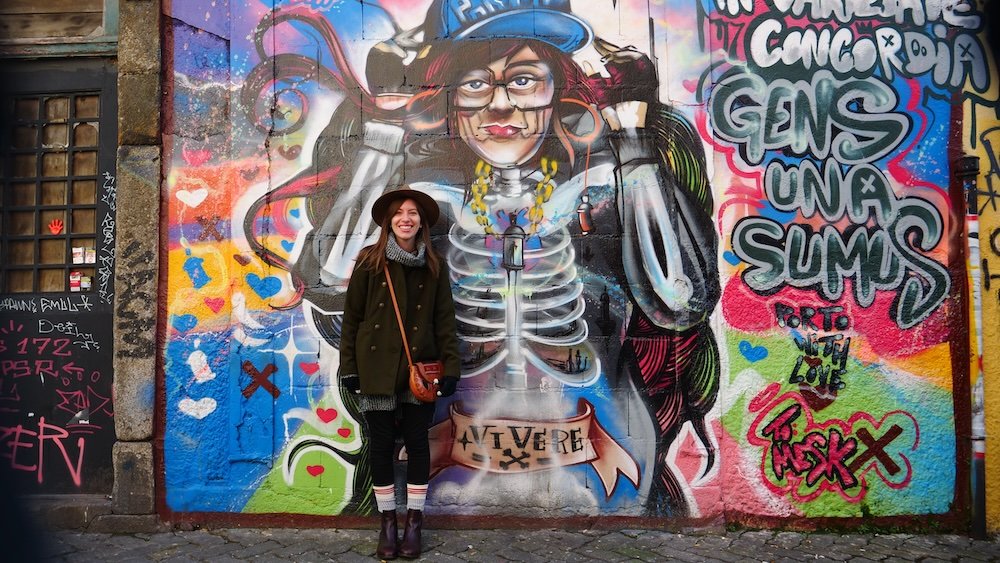
Top 20 Things To Do in Porto, Portugal For Visitors
Below are 20 experiences capturing the city’s essence. Let’s dive into Porto’s soul—from historic landmarks to tasty local specialties.
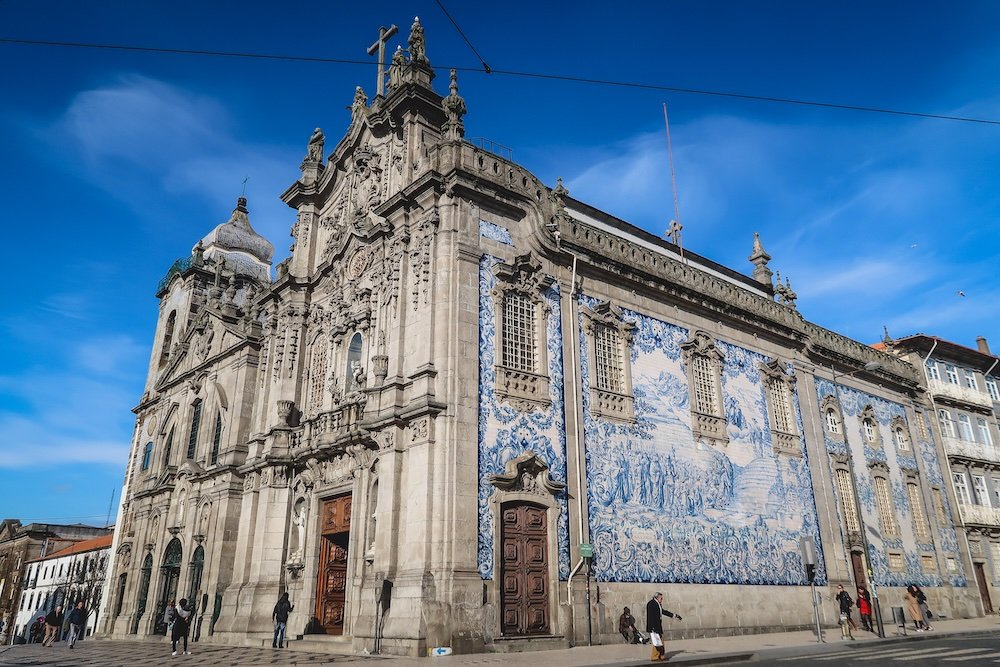
1) Visit the Blue Tiled Church “Chapel of Souls” (Igreja do Carmo – Capela das Almas)
This Blue Tiled Church stuns with its azulejo-covered facade depicting saints and religious scenes. The bright blue and white tiles stand out against the city’s subdued tones, making it a dream for Instagrammers. Inside, the vibe is tranquil, housing simple but elegant décor. Known also as “Capela das Almas,” it’s actually two churches side by side: Igreja dos Carmelitas and Igreja do Carmo, separated by the narrowest house in Porto. The detailed tile panels date back to the early 20th century, though they look far older. Stopping here is a quick yet mesmerizing visual treat before exploring more of downtown.
- Early morning light makes the blue tiles glow best for photos.
- There’s no large admission fee, but small donations are welcome for maintenance.
- You can quickly pair this visit with a short walk to nearby cafes or shops on Rua de Santa Catarina.
Tip: Tilt your camera upward—capturing the entire tiled facade in one shot is tricky, but that upward angle often works best.
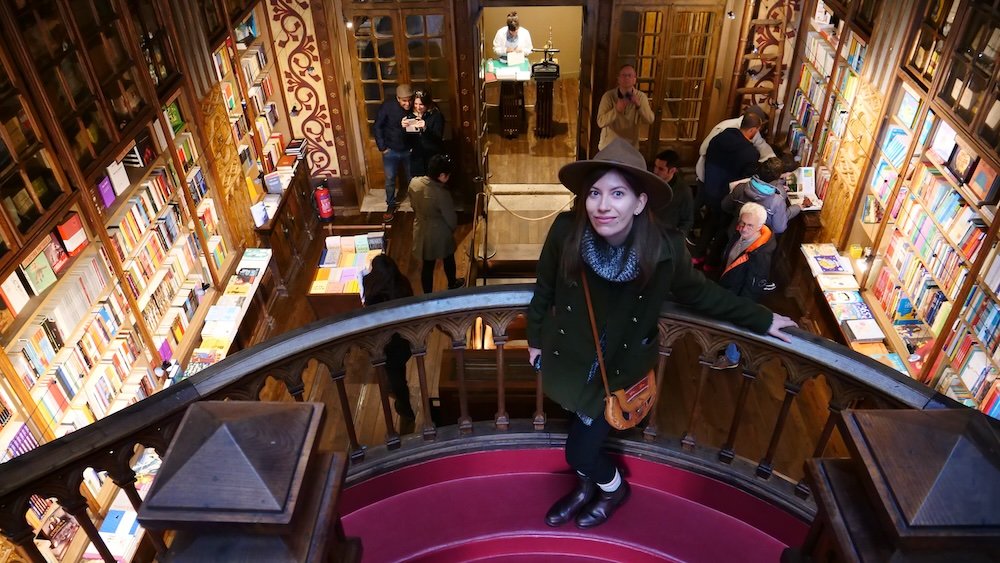
2) Shop for Books Inside Lello Bookstore (Livraria Lello)
Livraria Lello is often hailed as one of the world’s most beautiful bookstores. Its Art Nouveau design, stained-glass skylight, and sweeping red staircase make it a magnet for tourists. Rumor has it J.K. Rowling drew inspiration from its whimsical interior while living in Porto. The carved wooden shelves brimming with literature add to the fairy-tale vibe. Admission requires a ticket (refundable with book purchase), helping control crowds. If you love old-world charm, you’ll appreciate the hush of pages turning amid the architecture.
- Lines can form outside during peak hours—buy an online ticket for skip-the-line convenience.
- The staircase, though lovely, can be slippery—watch your step.
- Snagging a unique Portuguese souvenir book can be a sweet memory.
Tip: Go right at opening—you’ll sidestep the midday tourist surge for better photos and calmer browsing.
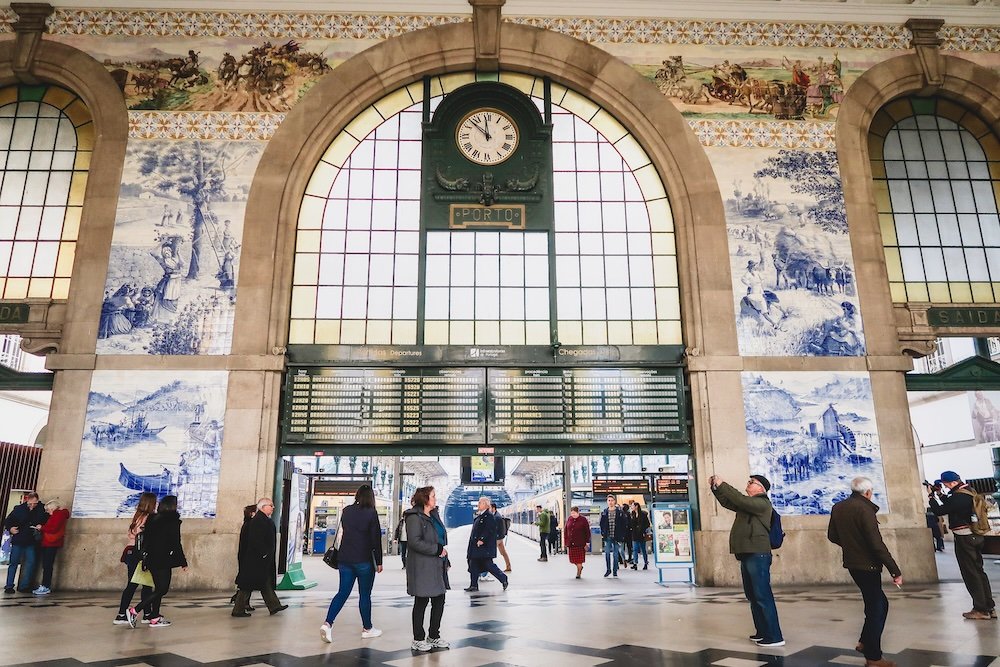
3) Set Foot Inside São Bento Train Station (Estação Ferroviária de São Bento) + Porto Cathedral (Sé do Porto)
São Bento Station is famed for its azulejo panels illustrating historical and rural scenes of Portugal. The main hall’s tile murals stun newcomers, turning a busy station into an artful gem. After soaking up the visuals, walk to the nearby Porto Cathedral (Sé do Porto). Perched on a hill, this Romanesque-Gothic landmark offers panoramic city views from its terrace. Inside, a cloister reveals more tilework, and the thick walls exude centuries of sacred aura. Combining these two stops immerses you in Porto’s layered history in under an hour.
- São Bento remains a working station, so watch for commuters and stay out of their way.
- The cathedral’s front plaza can be windy—pack a light jacket.
- Photography is allowed in most areas; confirm any no-photo signs in the cathedral’s cloister.
Tip: Pop out at the station’s side exit for a vantage of the cathedral perched above the city’s rooftops.
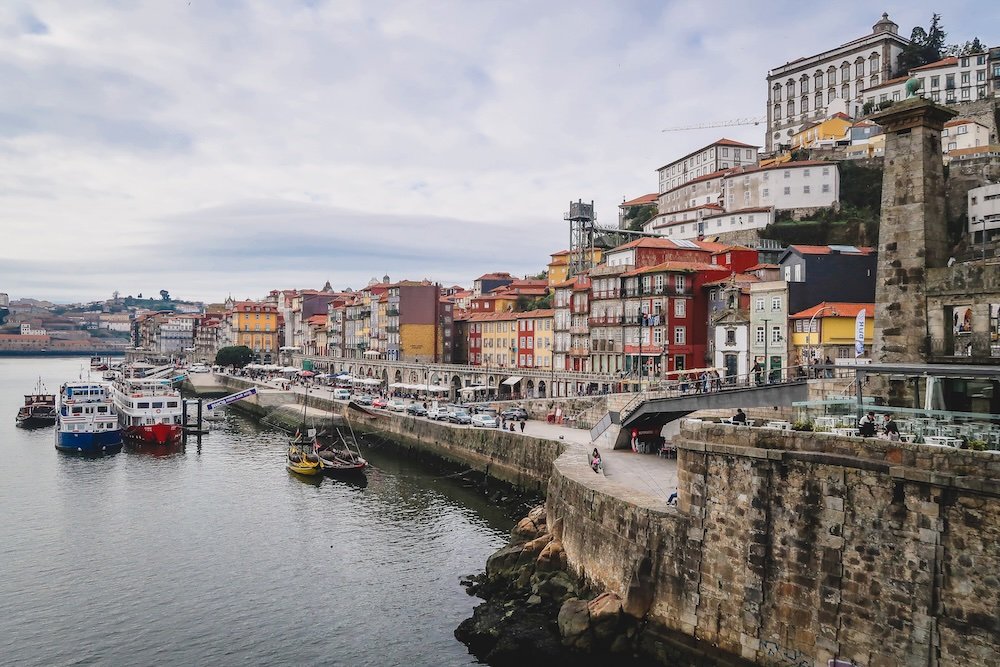
4) Explore the Riverside Quarter of Ribeira
Ribeira, a UNESCO World Heritage site, is the beating heart of Porto’s riverfront. Narrow alleys, vibrant facades, and laundry-laden balconies define its charming vibe. Strolling along the Douro banks, you’ll pass bustling cafes, street musicians, and local artisans selling cork souvenirs or hand-painted tiles. By night, the area glimmers under orange streetlights, setting a romantic stage. Boats line the quay, reminding you Porto’s trade legacy thrived here for centuries. It’s equally delightful to sip coffee at a waterfront terrace, simply watching life flow by.
- Some restaurants have tourist prices—compare menus if you’re budget-conscious.
- Evening buskers add live music—toss coins if you enjoy their tunes.
- Grab pastel de nata from a bakery stand if you crave a sweet treat.
Tip: Cross the river (by foot on Dom Luís I Bridge or a short boat) for a full panorama of Ribeira’s colorful skyline.
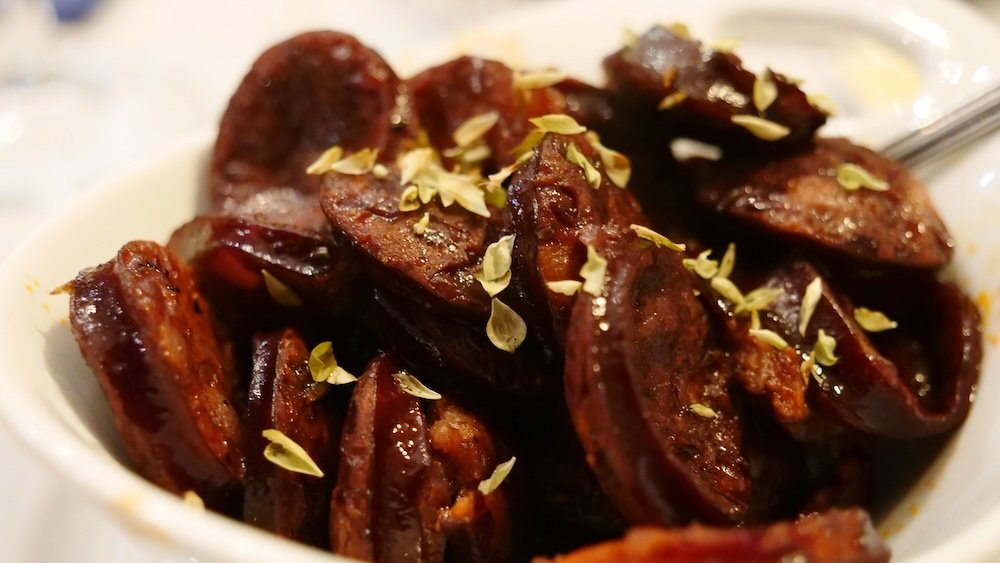
5) Sample Local Dishes from Porto at Terreirinho Restaurant
Terreirinho is a cozy spot known for showcasing authentic Porto cuisine. From bacalhau (salted cod) to hearty stews, each dish brims with homey flavors. The staff often guides you through daily specials or suggests local wines that pair well. Portions can be generous, so come hungry or share plates if you want variety. The interior feels warm and unpretentious—perfect for an unhurried meal after a day’s exploration. Tucked in a side street, it offers a more genuine taste than typical tourist traps.
- Reservations help on weekends; limited tables fill up quickly.
- Ask about off-menu specialties—they sometimes feature seasonal produce or fresh catch.
- House wine is typically good quality at a fair price.
Tip: Try an assortment—order a couple of tapas-style starters plus a main for the full flavor range.
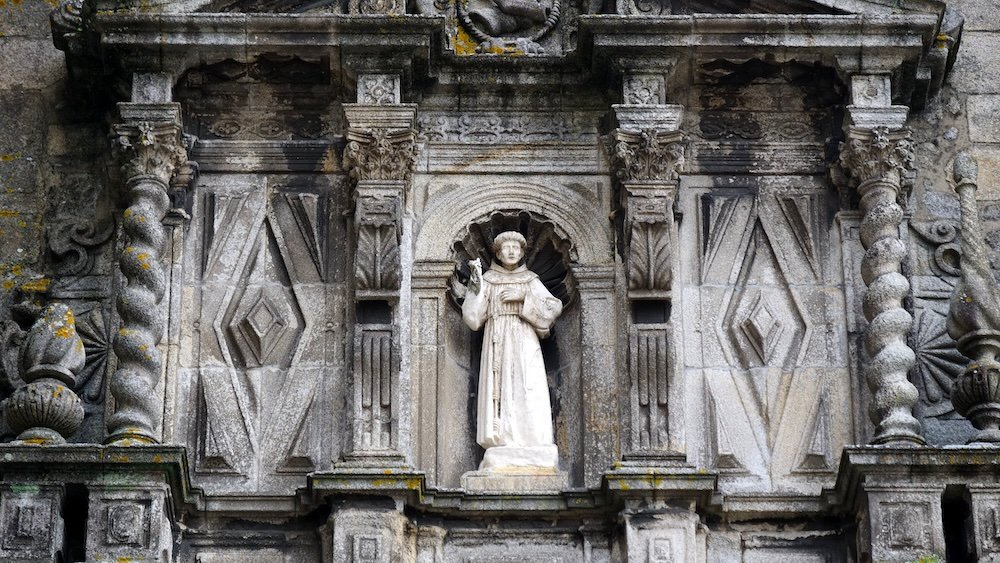
6) Visit the Church of Saint Francis (Igreja de São Francisco)
The Church of Saint Francis might look plain outside, but inside drips with Baroque gold. Entire columns, arches, and altars shimmer under elaborate gilded woodwork. It’s said that hundreds of kilograms of gold leaf coat the interior, a testament to the city’s historical wealth. A serene crypt below houses tombs and a small museum. The main nave can leave you speechless—so much ornamentation in one place is rare. Despite the glitz, the atmosphere remains solemn, bridging religious devotion and artistic flair.
- Some areas forbid photography—respect the rules to preserve delicate works.
- The attached museum displays relics and bits of archaeological finds.
- Tickets cost a few euros, supporting preservation.
Tip: Pause to reflect—the baroque gold might overwhelm your senses; stand quietly and observe details bit by bit.

7) Visit the Bolhão Market (Mercado do Bolhão)
Mercado do Bolhão is Porto’s most famous food market, brimming with fresh produce, fish, meats, and regional specialties. Housed in a historical building, stalls bustle with local vendors calling out daily deals. The aroma of ripe fruit, pungent cheeses, and aromatic herbs envelops you. Stop by a stall for a quick snack: maybe a slice of queijo da serra or a pastel de nata. Vendors are friendly—some might offer free samples if you show genuine interest. Renovations in recent years keep the structure safe while preserving its old-world charm.
- Weekdays see fewer tourists, so you can explore at ease.
- Some small cafes inside whip up tasty breakfast or a shot of espresso.
- Haggling is less common—prices are usually set, but bundling items might yield slight discounts.
Tip: Bring a tote if you plan to buy fresh goodies— it’s more eco-friendly than plastic bags.
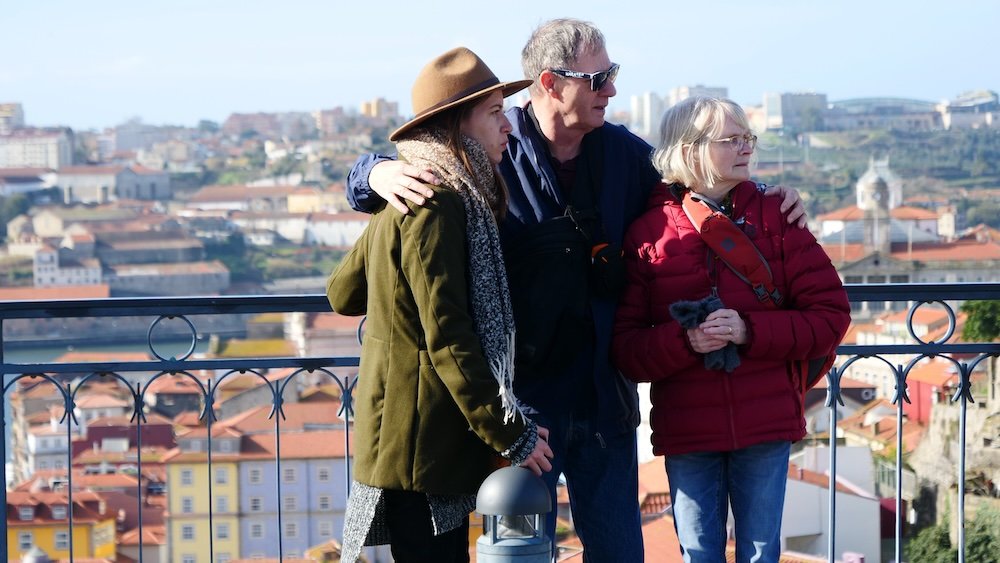
8) Walk across Dom Luís I Bridge for the Best Views of Porto (Ponte D. Luís I)
The double-deck Dom Luís I Bridge is an iconic symbol connecting Porto to Vila Nova de Gaia across the Douro River. Its iron arches, designed by a disciple of Gustave Eiffel, evoke a mini Eiffel Tower vibe. Pedestrians can cross the upper or lower level. The upper deck grants panoramic cityscapes, while the lower deck puts you near the water’s edge. Sunset strolls here are mesmerizing—the city’s color palette shifts from golden to soft pink. Plus, it’s free and open day or night, letting you appreciate Porto’s skyline from multiple angles.
- Watch for trams on the upper deck if you’re not used to them passing by.
- The lower deck can get busy with cars and foot traffic, so stay on the pedestrian lane.
- Photographers often gather at either end for vantage points—arrive early for prime spots.
Tip: Stop midway and look both ways: one side frames Ribeira’s old houses, the other glimpses Gaia’s wine cellars.

9) Drink Port Wine at Croft (Vinho do Porto)
Port wine is integral to Porto’s identity, and Croft in Vila Nova de Gaia stands as a classic cellar to sample it. Their tours explain the wine-making process, culminating in tastings of Ruby, Tawny, or Vintage ports. The candlelit cellars exude an old-world vibe, stacked with oak barrels that infuse sweet complexity. Sipping a glass while learning about centuries of tradition feels both indulgent and enlightening. Staff often suggests pairing notes—chocolates, cheeses, or nuts to bring out each wine’s nuance. You’ll exit with a deeper appreciation for this sweet, robust beverage.
- Tours can be reserved online or walk-in, but weekends might be crowded.
- The tasting area might offer upgraded flights for an extra cost if you want a premium port.
- Non-drinkers can still enjoy the atmospheric cellar and skip the tasting part.
Tip: Try the aged Tawnies—they often reveal luscious caramel, fig, and nutty tones unmatched by younger variants.
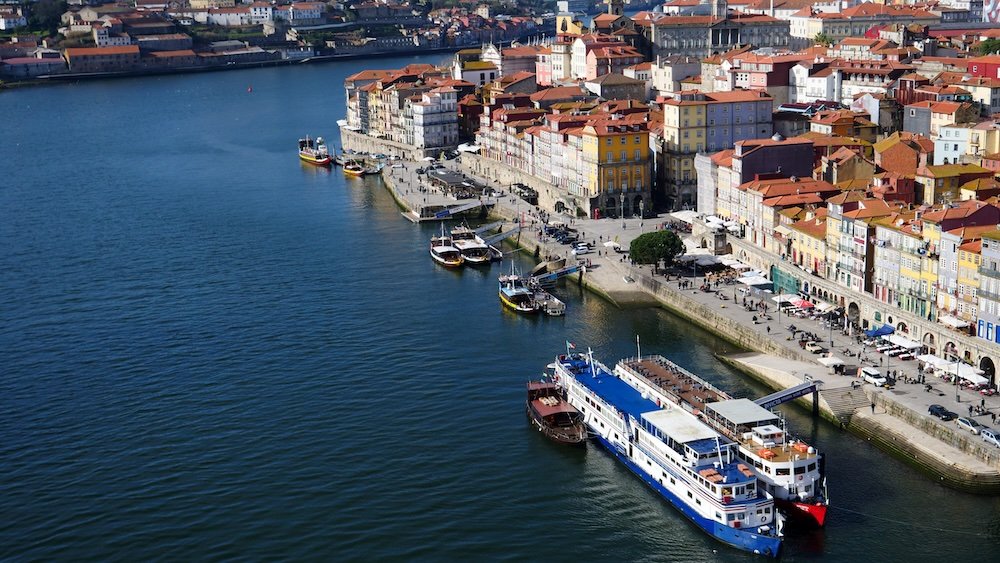
10) Take a Boat Tour, Cable Car, Funicular, or Walk Down the Douro River
Exploring the Douro from multiple angles enriches your Porto stay. You can hop on a “Six Bridges” river cruise, viewing city landmarks from a gently bobbing boat. The cable car in Gaia lifts you over rooftops, providing an aerial perspective of Porto’s colorful facades. Meanwhile, the funicular near Ribeira whisks you up steep terrain, saving leg power. Walking the riverside paths let you amble at your own pace—spotting street performers, craft stalls, and hidden nooks. Each approach offers a unique vantage on the Douro’s calm waters and the city’s layered skyline.
- Boat cruises last about 50 minutes, covering iconic bridges.
- The Gaia cable car ride is short but scenic—best done at sunset.
- The funicular can get lines—midday or late afternoon might be busiest.
Tip: Bundle these experiences—combine a short boat ride plus the cable car for a day of vantage variety along the Douro.

11) Eat a Francesinha Portuguese Sandwich
Porto’s legendary francesinha is a hearty sandwich layered with ham, sausage, beef, melted cheese, and crowned with a rich tomato-beer sauce. It’s famously heavy, often served with fries to soak up extra sauce. Each restaurant guards its own sauce recipe—some spicier, others tangy. The name “francesinha” (little Frenchie) nods to the sandwich’s inspiration from the French croque-monsieur, but it’s more robust. Locals debate the best place to get one—Café Santiago, Cervejaria Brasão, or your newest discovery. If you’re adventurous with your appetite, you must try it at least once in Porto.
- Pair with a cold beer or a fizzy drink to cut through the richness.
- Some spots add an egg on top—making it even more filling.
- Veggie versions exist, but they might not replicate the classic taste perfectly.
Tip: Share if you’re not a big eater—this dish can be huge, so splitting leaves room for dessert.
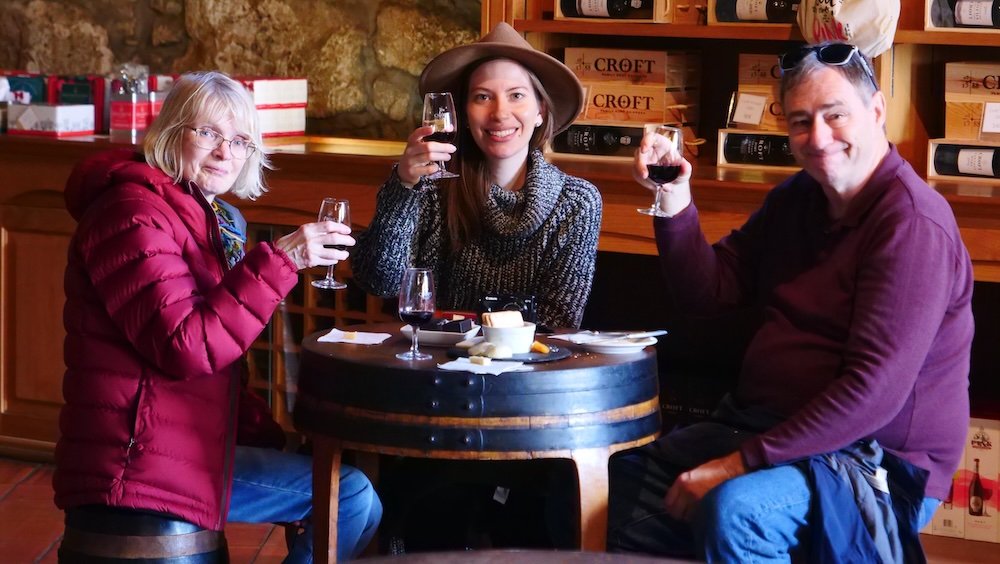
12) Wander Around Vila Nova de Gaia’s Wine Cellars
Right across the Douro, Vila Nova de Gaia brims with port wine lodges like Taylors, Sandeman, or Graham’s. Each cellar has a story—some with centuries-old casks in dimly lit chambers. Tasting flights range from basic to premium vintages. A short walk along Gaia’s riverbank reveals more cellars plus scenic patios. You can also climb steep hills to certain lodges perched with panoramic views, combining sips with city vistas. Even if you tried Croft earlier, exploring multiple cellars broadens your port knowledge.
- Some lodges require reservations for guided tours—check websites or ask your hotel.
- Each brand’s tasting notes differ, so variety is part of the fun.
- The wine shops here often have better prices or limited editions you won’t see elsewhere.
Tip: Pace yourself—port packs a punch, so alternate tastings with water or a light snack to keep your palate fresh.
13) Catch Fado Music Performances
While Lisbon is famed for Fado, Porto also hosts intimate Fado shows that capture Portugal’s melancholic soul. Performers in small venues or dedicated Fado houses sing about longing, fate, and love in haunting melodies. The minimal instrumentation—a Portuguese guitar and classical guitar—sets a raw emotional tone. Tourists and locals alike gather in candlelit rooms, reverently silent. The interplay of voice and guitar resonates deep, often evoking goosebumps. It’s a stirring cultural experience beyond day-to-day sightseeing.
- Book seats in advance—some shows have limited capacity.
- Dress decently; while not formal, it’s polite to respect the ambiance.
- Refrain from loud chatter or phone usage during performances.
Tip: Look for smaller Fado bars—bigger tourist shows can feel commercial, whereas intimate spots amplify Fado’s raw power.
14) Get Artsy at Serralves Museum & Park
The Serralves Foundation blends contemporary art exhibits, modern architecture, and an expansive park. The main museum showcases rotating displays of edgy paintings, sculpture, or installations. Nearby, the pink Art Deco Serralves Villa complements the manicured lawns and tall trees. The gardens themselves are worth hours of exploration—stroll winding paths, admire whimsical sculptures, or lounge by a pond. Families appreciate the open space for kids to run, plus occasional workshops. It’s a refreshing alternative to old churches and city squares, highlighting Porto’s contemporary vibe.
- A tree-top walk within the park offers unique views if you’re not scared of heights.
- Combine museum visits with a café break—the on-site café serves pastries or light meals.
- Tickets vary if you want only the park or museum or both.
Tip: Check events—Serralves often hosts music festivals, film nights, or special art fairs, adding to the fun.
15) Step Inside Palácio da Bolsa (Stock Exchange Palace)
The Palácio da Bolsa, once Porto’s commercial exchange, impresses with grand neoclassical halls. Tours highlight the exquisite Arabian Hall, designed in Moorish Revival style reminiscent of the Alhambra. Every corner drips with detail: gilded trim, frescoed ceilings, lavish chandeliers. Built in the 19th century by the city’s Commercial Association, it was meant to dazzle foreign traders. Today, it remains a top architectural site, hosting events and guided visits for travelers. The external facade may look subtle, but once inside, the ornate décor unfolds.
- Guided tours in multiple languages run regularly—no self-exploration allowed.
- Book ahead in peak season to avoid waiting.
- Photography rules vary by hall; confirm if flashes are banned.
Tip: Pay special attention in the Arabian Hall—count the Arabic calligraphy motifs for hidden complexity.
16) Relax at Crystal Palace Gardens (Jardins do Palácio de Cristal)
Overlooking the Douro, Crystal Palace Gardens present lush landscaping, fountains, and a variety of themed corners. The original Crystal Palace is gone, replaced by a dome-shaped pavilion, but the gardens remain a highlight. Pathways meander among statues, flowerbeds, and vantage points revealing wide river panoramas. Peacocks roam freely, adding a whimsical flair. Locals picnic on lawns or jog the winding trails. It’s a tranquil break from city bustle, perfect for a midday breather.
- Bring water or snacks—fewer cafes inside the garden.
- Some sections host seasonal events like book fairs or concerts.
- Benches at scenic overlooks fill quickly on sunny weekends.
Tip: Search out the viewpoint behind the domed pavilion for a breathtaking Douro panorama rarely crowded.
17) Take a Day Trip to the Douro Valley
The Douro Valley is a UNESCO-listed wine region about 1–2 hours from Porto. Famous for terraced vineyards and rolling hills, it’s the birthplace of Port wine grapes. Day trips might include scenic train rides or tours stopping at quintas (wine estates) for tastings. The Douro River’s winding path, flanked by vineyard slopes, fosters a tranquil, pastoral mood. You’ll see olive groves, small villages, and maybe a hillside chapel or two. Even in a single day, you glimpse the root of Porto’s wine heritage—an absolute stunner for lovers of nature and viticulture.
- Organized tours handle transport and sometimes lunch at a vineyard estate.
- In autumn, vines turn golden, intensifying the region’s beauty.
- Boat cruises on the Douro can be arranged if you prefer water vantage points.
Tip: Sit on the train’s right side (heading upriver) for the best glimpses of the Douro’s majestic terrain.
18) Indulge in Artisanal Ice Cream at Gelatarias
Porto’s gelato scene soared in recent years, with artisanal shops popping up across the city. Places like Santini or Gelatopia serve creamy scoops in flavors spanning classic chocolate to exotic combos like Port wine or basil-lime. The lines can be long on summer afternoons, but the payoff is luscious. Staff often encourage you to sample a spoonful or two before deciding. Wafers, cones, or cups—each sweet method hits the spot after a day’s walk. Locals enjoy it year-round, proving you don’t need scorching heat to relish top-tier gelato.
- Some shops also do pastries or coffee—great if you want a mini sugar-laden break.
- Vegan or dairy-free sorbets also appear, perfect for those with dietary restrictions.
- Prices can be slightly higher than average local desserts, but quality is superb.
Tip: Try a scoop of a local flavor, like “Pastel de Nata gelato,” blending egg custard sweetness with a hint of cinnamon.
19) Climb the Clérigos Tower (Torre dos Clérigos)
Torre dos Clérigos is an 18th-century baroque tower offering one of Porto’s best viewpoints. You’ll ascend around 200 steps in a narrow stairwell, passing glimpses of old bells. At the summit, the city sprawls in every direction—red rooftops, the Douro glinting in sunlight, and iconic spires dotting the horizon. The tower’s attached church (Igreja dos Clérigos) also merits a look for baroque detailing. The climb can be crowded, so be patient if others descend. The reward is a breezy vantage that crowns your city exploration.
- Early visits or late afternoons help beat lines.
- The spiral steps can feel tight—some might find it claustrophobic.
- Capture a 360-degree panorama if your camera has a wide-angle lens.
Tip: Upgrade to a combo ticket if available—it might include a museum area or skip-the-line privileges.
20) Enjoy a Sunset Along Foz do Douro
Foz do Douro, where the river meets the Atlantic, is perfect for a laid-back sunset session. Stroll the promenade, watch waves crash, or relax at a seaside café with a glass of vino verde. Foz exudes an upscale vibe—beautiful homes, manicured sidewalks, and classy restaurants. The air is fresh and salty, a pleasant contrast from downtown hustle. By dusk, the sky flares pink and orange, merging with ocean blues. It’s a tranquil end to a bustling day of city exploration.
- Some beach bars offer lounge chairs for a small fee—worth it if you plan to stay hours.
- Buses run from the city center frequently—cheap and easy if you skip taxis.
- Cyclists also love the route—rent a bike if your legs aren’t tired yet.
Tip: Pick a vantage near the lighthouse or the fortress for a dramatic coastal photo op as the sun dips below the horizon.

What To Eat and Drink in Porto, Portugal
Porto’s dining scene captures things to do around gastronomy: hearty plates, fresh seafood, sweet pastries, and potent wines. Let’s break it down:

Traditional Dishes
- Francesinha: This monstrous sandwich—ham, sausage, steak, cheese, and a beer-based sauce—definitely ranks as Porto’s signature.
- Tripas à moda do Porto: A tripe stew with white beans, sausage, and carrots, reflecting a centuries-old recipe.
- Bacalhau: Salted cod prepared in countless ways—baked with cream, fried as bolinhos (fritters), or simpler grilled fillets.
These staples define local flavors: rich, meaty, and sometimes with a dash of chili sauce. Don’t be shy to try tripe stew; many develop a taste for it after the first spoonful.
Tip: Experiment—even if you find the name odd, local dishes often surprise you with comforting, savory goodness.
Seafood Central
Being near the Atlantic, Porto thrives on seafood. Fresh sardines grilled with olive oil and salt, octopus roasted in garlic sauce, or succulent “amêijoas” (clams) in white wine. Restaurants near the Douro or in Matosinhos (the port area) source directly from fishermen. You can watch your dinner go from net to table in hours. Perfect if you love fish-based feasts with crisp vinho verde.
- Ask servers about the catch of the day—each morning yields varied fish supplies.
- Dipping bread in garlic-laden sauces is part of the fun.
- Prices rise if you pick a big fish—some charge by weight.
Bakeries and Sweets
Pastel de Nata is famous nationwide, but Porto also has local favorites like jesuítas (puff pastry triangles) or the “torta de Azeitão.” Neighborhood bakeries serve them fresh, sometimes still warm from the oven. Street stands may sell waffles with chocolate drizzle, or you’ll find layered sponge cakes in old-style patisseries. Pair any sweet with a shot of espresso (bica) or “galão” (milkier coffee). The combination brightens your mid-morning or afternoon slump.
- Many cafés open early—perfect for a quick pastry breakfast.
- Some spots only accept cash, so keep spare euros ready.
- Show interest: staff might suggest hidden gems not on the main menu.
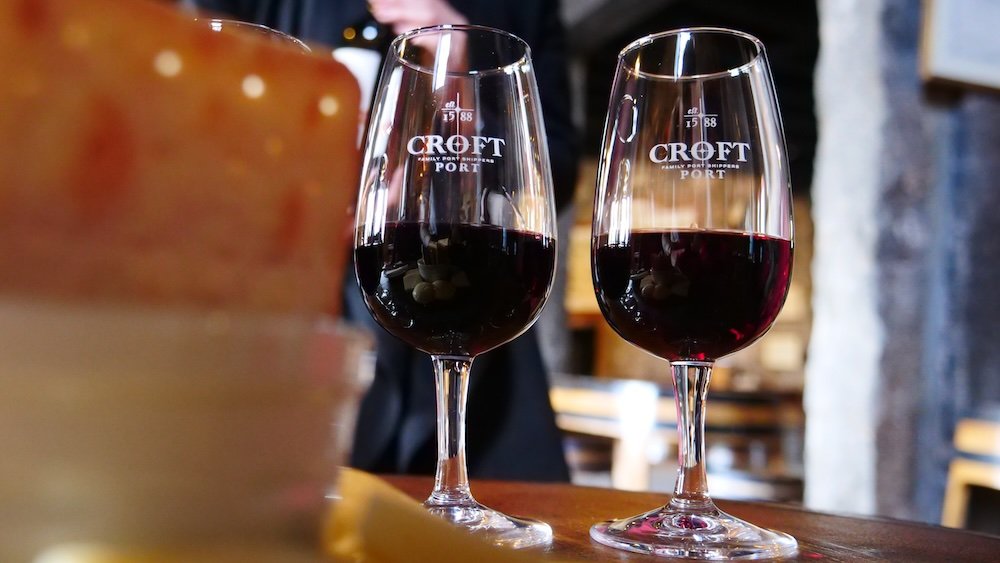
Port & Wine Culture
Porto’s identity interweaves with Port wine. This fortified sweet wine, typically served as dessert or with cheese, is available in countless styles—Ruby, Tawny, Vintage. Cellars across the Douro stock them, or you can sample flights in local bars. Red, white, and rosé table wines from the Douro region also stand out. Sipping a glass with a riverside view is practically a rite of passage here.
- Some restaurants use port-based sauces in cooking—like port reduction drizzle on beef or dessert toppings.
- If you prefer dryness, try a “dry white port” as an aperitif.
- Many shops near Vila Nova de Gaia let you taste before buying a bottle.
Street Food & Snacking
Check out markets or festivals for petiscos (Portuguese tapas). Think mini codfish cakes, olives marinated in herbs, or “rissóis” (fried turnovers with shrimp or fish filling). Cheap, quick, and flavorful. Wash them down with a small beer or fresh juice from a stall. For a truly local experience, munch these while strolling the cobbled streets at sunset.
- Some bars have “happy hours” offering free petiscos with drinks.
- Rissóis come in different fillings—chicken, shrimp, or spinach sometimes.
- Crisp on the outside, creamy on the inside—a perfect sidewalk nibble.
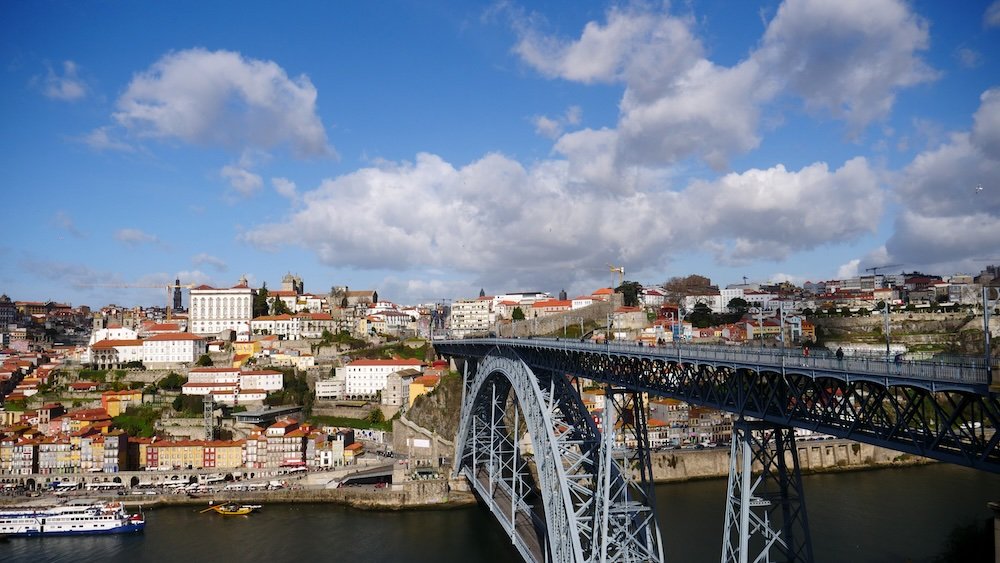
Tours For Visitors To Porto, Portugal
Tours simplify seeing top things to do in Porto. Especially if you want local insight without transport hassles. Here’s a breakdown of popular options:
1) Porto Walking Tour
A walking tour around the historic center is an easy introduction. Guides highlight landmarks like São Bento Station, the Cathedral, and hidden corners you’d miss alone. You’ll learn about Porto’s medieval walls, azulejo traditions, and the significance of local saints. Some tours include a quick Francesinha or pastel de nata stop, sprinkling in gastronomic delights. Walking keeps it personal, letting you feel each cobblestone slope underfoot. Perfect if you prefer flexible pacing and cultural stories over rushing.
- Free walking tours exist, tip-based, with enthusiastic local guides.
- Confirm times—some run only morning or afternoon.
- Wear comfy shoes—Porto’s hills can challenge your calves.
Tip: Ask the guide for offbeat restaurant tips—locals know where to score the best meals minus tourist hype.
2) Douro River Cruise
A classic river cruise offers a scenic route under Porto’s six iconic bridges. Short “6 Bridges” tours last ~50 minutes, launching from Ribeira or Gaia side. The boat’s open deck provides panoramic vantage points: terraced houses, the Dom Luís I Bridge, and riverside cafés gliding by. Some cruises blast recorded info about the city’s history, while others keep it minimal. If you want a more immersive experience, choose a smaller operator or a fancier wine-tasting cruise. Even in gloomier weather, the Douro’s calm reflection can be enchanting.
- Arrive early for the best seats up top, especially in busy seasons.
- Evening cruises capture city lights, though day tours show tile details in bright sunlight.
- Family-friendly—kids often enjoy the gentle boat sway.
3) Port Wine Cellar Tour
Wine cellar tours in Vila Nova de Gaia top most visitors’ lists. Each brand (Graham’s, Taylor’s, Sandeman, Croft, etc.) spins a unique story and tasting flight. A guide explains harvest cycles, oak barrel aging, and subtle differences between Ruby, Tawny, or Vintage. Some tours let you see centuries-old barrels and a museum of brand heritage. Tasting rooms can be cozy, candlelit, or modern-chic. It’s a warm introduction to Porto’s sweet wine legacy.
- Book midday or early afternoon—some cellars close by early evening.
- Budget tours might limit tastings to 2–3 sips; premium packages have more variety.
- Try a side of chocolate or cheese pairings if offered.
Tip: Combine one or two cellar visits daily—overdoing it can saturate your palate and your budget.
4) Foodie Tour
A local food tour covers markets, pastries, and petiscos bars, letting you sample everything from codfish fritters to green wine. Guides ensure you skip touristy duds, zeroing in on real flavors. You might start with a pastel de nata for breakfast, proceed to Bolhão Market for produce sampling, and finish with a heartwarming soup or sizzling grill. Some tours blend historical tidbits about Porto’s role in Portugal’s spice routes or maritime trades. Great if you can’t decide which restaurants to try or want an immersive tasting spree.
- Big appetites recommended—these tours often feed you more than expected.
- Vegetarian-friendly tours exist; ask about dietary constraints in advance.
- Group sizes range from intimate (6–8 people) to bigger (15+).
Tip: Wear stretchy pants—tasting multiple dishes in under three hours can fill you up fast.
5) Day Trips to Douro Valley
Though not strictly “Porto city,” day tours to the Douro Valley are a highlight. Operators handle the 1–2-hour drive, estate visits, wine tastings, and a scenic boat ride on the Douro. The hillside vineyards are gorgeous, especially in autumn’s golden leaves. Guides share how port grapes grow, followed by a hearty lunch in a local village. Perfect if you crave a deeper wine experience beyond city cellars.
- Some tours gather small groups (8–12) in a comfy minivan for a personal vibe.
- Lunch in a vineyard can be spectacular—fresh produce, local olive oil, homemade bread.
- Weather can shift—pack a light jacket in case of chilly breezes near the river.
Tip: Confirm how many wineries you’ll visit—3+ visits might rush you, 2 is often enough for a relaxing pace.
Booking Tips
- Online: Compare TripAdvisor, Viator, or direct sites for reviews.
- Local: Hotels or tourist info desks also arrange tours, sometimes offering same-day spots.
- Language: Most tours are in English, though Spanish, French, or Portuguese tours exist.
- Group vs. Private: Private tours cost more but can be tailored to your preferences.
- Budget: Prices vary—wine tours might cost €20–€70, day trips €50–€100+ per person.

Porto Accommodations Guide: Hotels, Guesthouses and Hostels
Where you sleep in Porto shapes how you access things to do. Each district offers distinct vibes, from riverside romance to lively squares. Here’s an overview:
Ribeira & Riverfront Hotels
Staying near Ribeira plunges you into Porto’s UNESCO-listed heart. Cobblestone lanes, balcony-laden buildings, and the Douro mere steps away. Accommodations vary: small boutique hotels with old-world charm, or high-end properties offering direct river views. You’ll pay a premium for that prime location, but the trade-off is enchanting. By dusk, you can watch lamplights shimmer on the water right from your window. Great if you love scenic strolls and want nightlife close by.
- Some older buildings lack elevators—ask if you have heavy luggage.
- Street noise can echo, especially on weekends—pack earplugs if sensitive.
- Book early in peak season (spring-summer) to secure the best vantage rooms.
Tip: Request a river-view or balcony if possible—sunset glints on the Douro are mesmerizing from your bedroom.
Baixa/City Center
Baixa stands slightly uphill from Ribeira, hosting modern shops, theaters, and grand squares. Here, you’ll find boutique hotels and apartment rentals at moderate prices. The vibe is busier by day, with locals working or shopping. Nightlife is more subdued than Ribeira, but still near enough for a short walk or quick ride. Great if you want quick access to São Bento Station or the city’s main thoroughfares. This zone merges practical convenience with walkability.
- Metro lines often converge in or near Baixa, easing day trips or early airport rides.
- Some streets are steep—if you plan to walk a lot, factor in the hill factor.
- Check for free or discounted breakfast—some smaller hotels offer it.
Cedofeita and Boavista
Cedofeita/Boavista area sits more modern, with wide avenues, cultural centers, and big business hotels. You’ll find chain hotels, upscale apartments, and local neighborhoods with fewer tourists. The Serralves Museum is accessible from here, plus a short bus or metro takes you downtown. Families or business travelers might appreciate the quieter evenings. You won’t see the Douro views but do get spacious rooms and often better deals.
- Boavista Roundabout marks the area’s commercial hub.
- Larger hotels might have gyms, pools, or meeting rooms.
- Public transit lines link to central Porto in ~10–15 minutes.
Porto Old Town (Santo Ildefonso)
Santo Ildefonso near Bolhão Market or Santa Catarina Street brims with local flavor. Guesthouses nestle among traditional pastel-colored row houses. If you value a glimpse of daily life—neighbors chatting from balconies, small bakeries next door—this is your spot. Prices can be lower than riverside accommodations. You’re near markets and authentic mom-and-pop eateries. The trade-off? A 10–15 minute walk downhill (and uphill back) to Ribeira or the main sights.
- Street parking might be tough—ask about private lots if driving.
- Some older guesthouses can be charming but not fully renovated—read reviews for comfort level.
- Proximity to Bolhão means easy access to fresh produce or quick lunches.
Hostels for Budget Travelers
Porto’s hostel scene has grown, with stylish design hostels offering dorms or private rooms. Many are near the city center, allowing you to walk to main squares, nightlife spots, or the Douro. Common rooms encourage socializing, and staff typically organizes pub crawls or walking tours. The cost per night can be a fraction of a budget hotel. Great for meeting travelers if you’re solo or want a friendly communal vibe.
- Some hostels serve free breakfast—simple cereal, toast, coffee.
- Check if they enforce “quiet hours” if you’re not into late-night partying.
- Confirm if your room has air conditioning or a fan—hot summers can be brutal in older buildings.
Day Trips From Porto, Portugal
Things to do beyond Porto can fill a full itinerary, especially if you crave scenic or cultural variety. Let’s explore top day trip picks:
1) Douro Valley Winery Visits
We touched on it briefly, but a dedicated Douro Valley day stands out. You’ll journey upriver by scenic train or minivan, passing terraced vineyards. Stopping at quintas, you taste port and table wines, stroll among vines, and savor local lunch—maybe hearty Portuguese stew. The region’s UNESCO status ensures spectacular views: rolling hills, green curves. If time allows, a short boat ride in Pinhão underscores the Douro’s tranquil charm. A must for wine aficionados or nature lovers.
- Some tours add a multi-course lunch at an estate.
- Autumn sees vines turn golden, photogenic at every turn.
- Check if you want a train or bus approach; trains can be romantic but less flexible for multiple estate stops.
Tip: Stay a night if you have time—sunset over the vineyards and a quiet morning walk among vines is magical.
2) Braga and Guimarães
North of Porto lie Braga and Guimarães, two historic gems. Braga is known for its splendid cathedral (the oldest in Portugal) and the Bom Jesus do Monte sanctuary with its iconic baroque staircase. Meanwhile, Guimarães is dubbed the “birthplace of Portugal,” boasting a medieval core and an impressive castle. Day tours often combine both towns, sharing tales of national identity and religious fervor. Walking Guimarães’ old walls or climbing the Bom Jesus steps immerses you in centuries-old tradition. The small-town ambiance differs from Porto’s bustling vibe, offering a taste of rural authenticity.
- Tour operators or trains easily connect these cities in a single day loop.
- Bring comfortable shoes—Bom Jesus has many stairs.
- Local pastries differ in each city—sample them if you spot a pastelaria.
Tip: Start early—two cities in one day can be intense, but it’s doable if you pace yourself.
3) Aveiro and Costa Nova
Aveiro, nicknamed the “Venice of Portugal,” features canals lined by striped moliceiro boats. A quick train ride from Porto, you can enjoy a boat tour, nibble on sweet “ovos moles” pastries, and roam pastel-colored Art Nouveau buildings. Nearby Costa Nova stuns with candy-striped beach houses along the Atlantic. Strolling the boardwalk feels whimsical, with red, blue, and yellow stripes on each facade. Perfect if you want a breezy coastal break from city hills.
- Combine the two for a full day: half in Aveiro, half in Costa Nova.
- The boat ride is short but scenic—snag a seat at the bow for best views.
- Beach vibes at Costa Nova can be windy—bring a light jacket.
Tip: Pick a calm day if you plan to relax near the sea; Atlantic gusts can get strong.
4) Peneda-Gerês National Park
If you crave wilderness, Peneda-Gerês is Portugal’s sole national park. Waterfalls, hiking trails, and lush forests define this mountainous escape. Day tours or a personal car can get you there from Porto in about 1.5–2 hours. You’ll see ancient Roman roads, pristine lakes, and maybe wild Garrano horses. Some guided tours include scenic stops, picnics, or short dips in natural pools. The fresh air and greenery rejuvenate travelers weary of city bustle.
- Dress in layers—mountain weather shifts quickly.
- Bring sturdy hiking shoes if you plan extended walks.
- Minimal shops in rural pockets, so carry snacks and water.
Tip: Confirm if the tour offers gear, or if you must bring your own (like trekking poles or bathing suits).
5) Santiago de Compostela (Spain)
For a cross-border experience, you can day trip to Santiago de Compostela in Spain, roughly 2.5–3 hours away. The famous cathedral marks the end of the Camino pilgrimage route. Its medieval streets hum with pilgrims celebrating their journey’s end. You can attend the Pilgrim’s Mass, explore the old quarter, or sample Galician seafood. The trip is long, but it’s unique: you’ll see a Spanish region’s culture differ from Portugal’s while bridging two countries in a single day.
- Some bus lines or guided tours depart Porto early, returning late.
- Bring your passport or ID—though Schengen area is open, it’s wise to keep documents.
- Tapas bars near the cathedral serve octopus (pulpo) and other specialties.
Tip: Check schedules—the cathedral’s famed botafumeiro ceremony (swinging incense) doesn’t occur daily, so see if your date matches.
Day Trip Logistics
- Transport: Buses, trains, or guided minivans. Some travelers rent cars for flexibility.
- Timing: Early starts allow you to maximize daylight.
- Meals: Many tours include lunch; if not, try local specialties in each destination.
- Weather: Western Portugal can be rainy; pack an umbrella or waterproof layer.
- Advance Booking: Popular routes (Douro Valley) can fill quickly on weekends—reserve in advance.
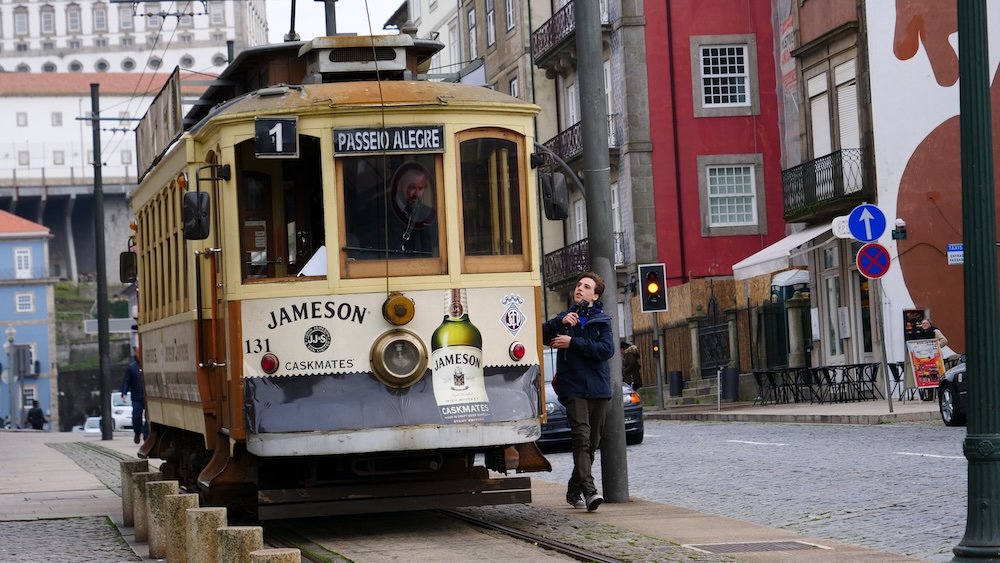
Porto Transportation Guide
Figuring out how to get around Porto is essential for tackling all those things to do. The city offers multiple modes—some modern, some quaint—and each suits different traveler styles. Let’s map out your options:
On Foot
Porto’s compact center makes walking a top choice. You’ll traverse winding streets, discover hidden cafés, and linger over scenic viewpoints. The catch? Hills. Some slopes are steep, so wear comfy shoes and embrace breaks. Despite the workout, you gain close-up glimpses of azulejo facades and local life. Many travelers find this stroll-based approach the best way to soak in the city’s atmosphere.
- Keep water handy, especially in summer.
- Watch for uneven cobblestones; slipping is easy after rain.
- Evening wanderings are typically safe, but remain mindful in quieter areas.
Tip: Use side streets—the main roads might skip charming corners, while smaller alleyways reveal hidden gems.
Our Travel Transportation Vlog From Samuel and Audrey Channel: Nomadic Samuel + That Backpacker as hosts
Metro and Buses
Porto’s Metro is sleek and user-friendly, connecting the airport, city center, and some suburbs. Tickets can be purchased from machines; you must validate them before boarding. The network’s lines cut through important spots—Trindade station is central, linking multiple lines. Buses complement the Metro, bridging neighborhoods off the rail map. They’re sometimes slower due to traffic, but hold their own for certain routes. If heading to the coast or outskirts, a combo of Metro + bus might be your best bet.
Our Travel Vlog From Porto, Portugal on Samuel and Audrey YouTube channel: That Backpacker + Nomadic Samuel as hosts
- Look for “Andante” cards—top them up for multiple journeys.
- If you forget to validate, inspectors can fine you on the spot.
- Rush hour sees busy trains, so expect crowds.
Trams and Funicular
For a nostalgic twist, hop on the vintage trams in Porto. Tram 1 runs riverside from Ribeira to Foz, offering scenic watery views. The wooden interiors and the steady clack of old rails transport you to bygone times. Meanwhile, the Funicular dos Guindais helps you skip a steep climb between Ribeira and Batalha. It’s short but scenic, plus it saves your legs from a sweaty uphill trek. Locals might rely on them less, but for travelers, they’re both functional and charming.
- Tram fares are higher than buses—count it as an experience more than a cost-saving ride.
- The funicular queue can build—off-peak times help you avoid crowds.
- Windows on older trams don’t always open—brace for minimal ventilation in summer.
Tip: Do the tram at least once—it’s part of Porto’s living history, not just a tourist gimmick.
Taxis & Rideshares
Taxis abound, especially near major squares or stations. They run on meters, though some drivers might propose flat fees. “Uber” or local ride-hailing apps also function, sometimes cheaper than standard cabs. Payment can be direct or via app, depending on your setup. This route is best if you’ve heavy luggage or you’re traveling late at night. The city’s roads get congested, but short distances might still be workable if you prefer door-to-door convenience.
- If using a taxi, confirm they start the meter.
- Beware surge pricing on rideshare apps during big events or peak hours.
- Tipping is modest in Portugal—round up or add a small amount.
Driving Yourself
Renting a car is possible, but central Porto’s narrow lanes and limited parking can frustrate. Unless you plan day trips to Douro or beyond daily, a car might be a hassle. Parking garages cost a fair bit, and street parking is typically pay-and-display with time limits. If you do rent, smaller cars help navigate tight streets. Many travelers skip driving in the city and only rent if they’re exploring the region extensively.
- Watch for “residents only” zones.
- Traffic in rush hours near the bridges can stall you.
- Plan routes in advance—GPS signals can be spotty in tight old-town alleys.
Tip: Rent a car only if your itinerary includes frequent out-of-town jaunts; otherwise, it’s more trouble than it’s worth.
Biking and Scooters
Porto’s hills can deter casual biking. However, e-bikes or scooters can handle slopes better. The city is gradually adding bike lanes, though they remain scattered. If you’re used to robust cycling infrastructure, you might find Porto’s roads challenging. Still, for short coastal rides or exploring flatter areas near the river, bikes can be fun.
- Some hostels or shops rent e-bikes by the hour/day.
- Wear a helmet—cars might not always expect cyclists on narrow streets.
- Coastal paths to Matosinhos or Foz are relatively gentle for a scenic ride.
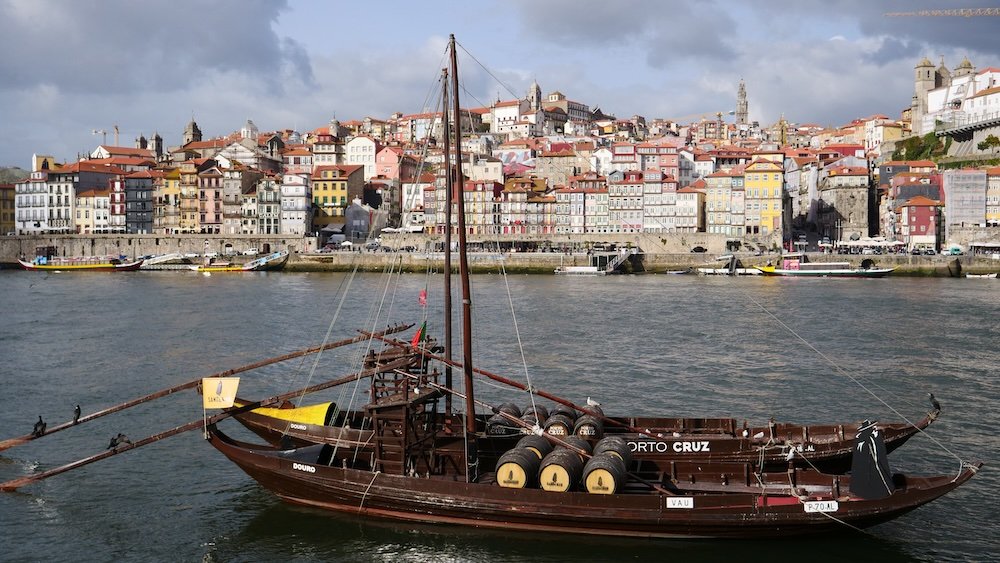
Porto Travel Guide: Final Thoughts
Porto resonates with history, culture, and flavors that leave an imprint on your traveler’s heart. Each day, as you wander the things to do, you’ll sense a city cherishing both heritage and innovation. From the cobbled alleys of Ribeira to the modern notes in Serralves, from robust wine cellars to bright cafes perched on hills, Porto brims with layered experiences.
Embrace the City’s Rhythm
Porto is not huge but packs a punch. You can fill a day with baroque churches, scenic overlooks, and a side of Francesinha. Another day might revolve around boat tours and Port wine tastings in Gaia. But you don’t have to rush. The city encourages you to slow down, watch local life pass by, or chat with a friendly café owner. The hush of dawn on the Douro, the vibrant hush of night, both beckon you to adapt to an unhurried pace.
Connect with Local Culture
Yes, Porto thrives on tourism, but it’s also a place where neighbors greet each other across balconies and small tascas serve honest meals. Stop in a family-run shop, sample homemade jams, or ask the bartender about their favorite hidden viewpoint. Authentic interactions sparkle here. Don’t limit yourself to main boulevards—turn corners, slip into side streets, discover quiet squares where kids chase pigeons. That’s how you glean Porto’s soul beyond the postcards.
Savor the Tastes
Food anchors many travelers’ memories. Porto’s hearty fare, from codfish brilliance to sweet pastries, underscores local identity. Port wine is more than a beverage—it’s a story of land, family estates, and centuries of trade. Even if you’re not typically a sweet wine fan, try a Tawny or Vintage in an atmospheric cellar. And remember to keep an open mind for simpler bites, like chouriço bread or a hot bowl of caldo verde soup. Let your palate roam freely.
Keep Searching
Travel never reveals everything in one sweep. Porto, especially, has layers you might only glimpse if you linger. Maybe next time you’ll watch the city’s festival, ride the iconic heritage tram route in full, or delve deeper into Douro’s hidden vineyards. Even if you only have a weekend, that taste can spark a desire to return. Porto casts a gentle spell: unassuming yet enchanting.
